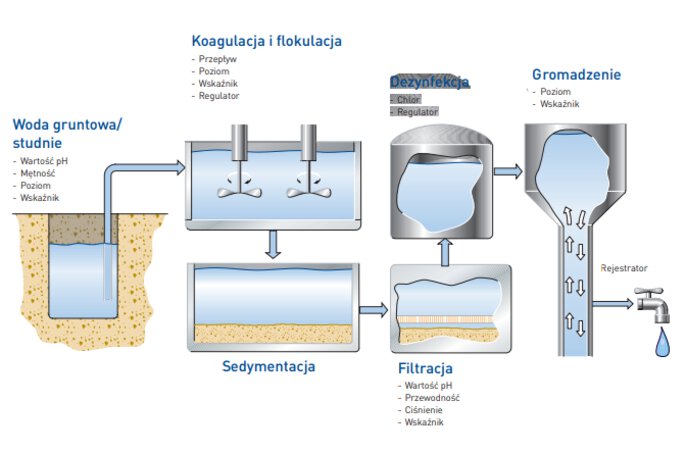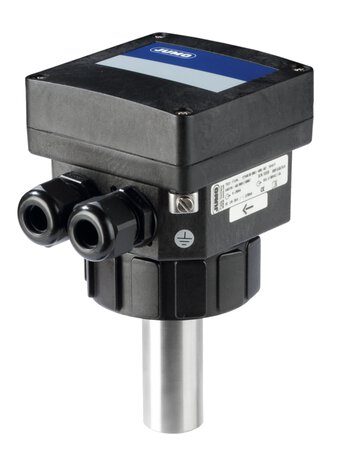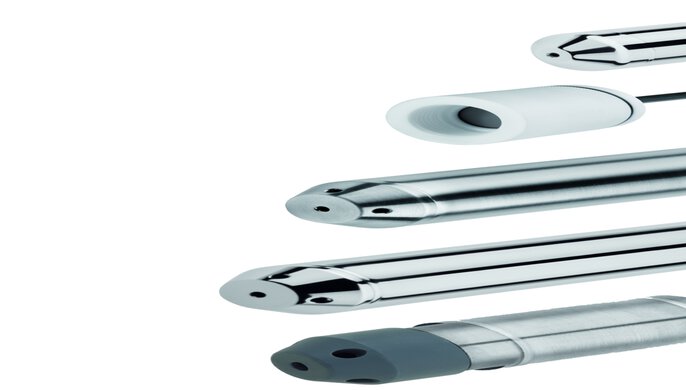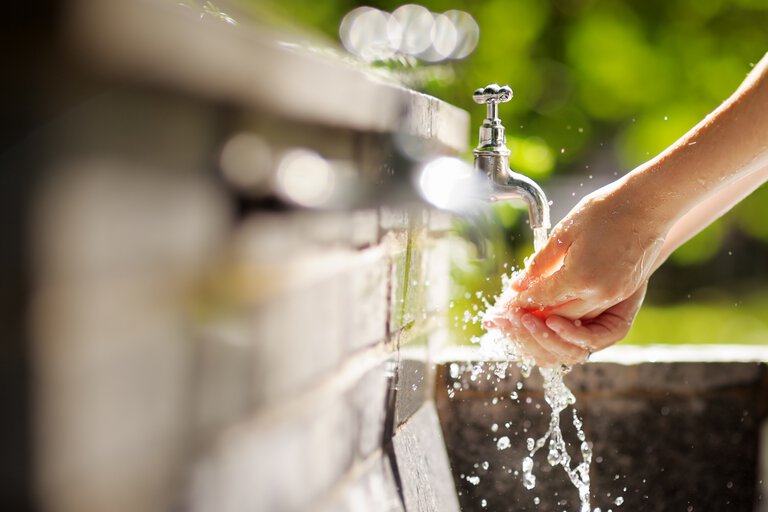

How to treat groundwater? Measuring conductivity, pH, turbidity, level and flow
Groundwater plays a crucial role in our daily lives, providing essential drinking water for millions of people around the world. However, in order for this water to be safe for consumption, it must go through a complex treatment process. In this blog post, we'll take a look at how this process takes place, as well as which parameters - such as level, conductivity, pH and turbidity - are key to assessing groundwater quality. In addition, we will provide examples of measurement technology suitable for this solution. Read more!
What is groundwater?
Groundwater is a natural water resource located beneath the earth's surface, in pores and rock fractures. They are very important for water management, as they meet the needs not only of the population, but also of agriculture and industry. In addition, they are a key component of ecosystems, affecting the functioning of rivers, lakes and wetlands.
Why is groundwater treatment important? These waters are susceptible to contamination by chemicals such as pesticides, fertilizers, heavy metals and industrial wastewater. In addition, compounds such as iron and manganese can impart undesirable taste, odor and color to water, and organic matter can provide a breeding ground for microorganisms. Biological contaminants, such as bacteria and viruses, can make water hazardous to health. Lack of water treatment can lead to poisoning, infectious diseases and long-term health effects. Regular monitoring and treatment of subterranean water is key to ensuring safe and clean water for communities.

Drinkable water in Poland comes mainly from groundwater (about 70%) and surface water (about 30%)
From Groundwater to Drinking Water – Stages of Treatment
Treating groundwater to produce potable water is a multi-stage process that ensures clean and safe water for consumption.
-
Groundwater Extraction:
Water is extracted from wells, during which parameters such as pH, turbidity, and water levels are monitored.
-
Coagulation and Flocculation:
Adding coagulants causes small particles of contaminants to clump together into larger aggregates (flocs), which are easier to remove. Parameters such as flow rate, levels, and indicators are continuously regulated to ensure optimal efficiency of this process.
-
Sedimentation:
In this process, larger floc particles settle to the bottom of the tank, allowing for their separation from the clearer water.
-
Filtration:
Water flows through a filtration system that removes smaller impurities. Parameters such as pH, conductivity, and pressure are monitored.
-
Disinfection:
Chlorination or ozonation is used to eliminate pathogens, ensuring the microbiological safety of the water. It is important to monitor and regulate the amount of disinfectant added to guarantee the effectiveness of the process.
-
Storage:
Treated water is stored in storage tanks, where its level and quality indicators are monitored before being supplied to the water distribution network.
Each stage is crucial for effective treatment, ensuring that the water meets strict standards for human consumption quality.

Stages of groundwater treatment for drinking water
How to measure groundwater conductivity?
Measuring groundwater conductivity is a key step in the treatment process, especially during sedimentation. Conductivity is measured to assess the amount of dissolved ions, which indicates the presence of chemical impurities.
Various measurement sensors are used for this purpose. An example is the JUMO tecLine CR two-electrode conductivity sensor. Another type is the four-electrode conductivity probes of the JUMO tecLine CR-4P series, designed to monitor electrolytic conductivity in aqueous solutions.

Part of our range of sensors for liquid analysis. First from left is the JUMO tecLine CR two-electrode conductivity sensor (202924), fifth is the JUMO tecLine CR-4P four-electrode conductivity probe (202930)
How to Measure Pressure in the Filtration Process?
Filtration is a process where a mixture of solids and liquids in water or wastewater is separated using filters. Effective filtration requires monitoring the pressure before and after the filter to ensure optimal operation and system efficiency.
Pressure Measurement Processes:
Filtration: Controlling the pressure before and after the filter is crucial as it allows for detecting pressure drops, which may indicate filter clogging or other operational issues.
Proposed Solutions:
Universal Pressure Transmitter JUMO MIDAS S05: A transmitter for measuring relative and absolute pressure, equipped with a stainless steel diaphragm, suitable for various media, including aggressive ones.
PID Controller and Standard Signal Indicator JUMO AQUIS 500 AS: A device for processing signals from sensors with standard outputs of 4-20 mA, 0-10 V, enabling automatic temperature compensation.
These transmitters and controllers allow precise pressure measurement, essential for effective filtration process management and maintaining high water quality.

JUMO MIDAS S05 universal pressure transmitter with available process connections (401010)
Determination of chlorine concentration in water disinfection process
The disinfection process aims to eliminate or neutralize microorganisms present in water. Chlorine is the most commonly used disinfectant in the treatment of consumer water. According to the principle of "as much as necessary and as little as possible," the concentration and dosage of chlorine must be constantly monitored. Free chlorine sensors, such as the JUMO tecLine Cl2, are used for this purpose. These are membrane-based, amperometric probes designed to determine the concentration of free chlorine in aqueous solutions, equipped with integrated temperature compensation.

JUMO tecLine Cl2 free chlorine sensor (202630)
How to measure the turbidity of drinking water with a turbidity probe?
During flocculation and coagulation processes, accurate turbidity monitoring allows for optimal dosing of chemicals, resulting in more effective water treatment. Turbidity refers to the degree to which water loses its clarity due to the presence of suspended particles. Monitoring turbidity is important because high turbidity can indicate the presence of organic and inorganic contaminants that can be harmful to health.
One recommended solution for this application is the JUMO ecoLine NTU optical digital turbidity probe. This probe is designed to measure the turbidity of drinking, process and utility water. Thanks to its advanced optical technology, the JUMO ecoLine NTU provides precise and reliable results, which is crucial for effective management of water filtration processes.

Optical digital turbidity probe JUMO ecoLine NTU (202670)
Which flow meter to use for drinking water treatment processes?
Accurate flow monitoring allows you to control the amount of coagulants and flocculants added, which is essential for effective contaminant removal.
Electromagnetic flowmeters are ideal for these applications. The JUMO flowTRANS MAG I01 submersible magnetic-inductive (MID) flowmeter is an excellent choice for its reliability and precision. Thanks to its submersible design, it provides accurate flow measurements under various operating conditions.
Another recommended device is the JUMO flowTRANS MAG I02 submersible magnetic-inductive flowmeter with display. It provides not only accuracy, but also the convenience of flow monitoring thanks to its built-in display.

JUMO flowTRANS MAG I01 submersible magnetic-inductive meter (MID) (406010)

JUMO MAERA series hydrostatic probes. The first and third from the top are the MEARA F27 probe (404391), and the fifth is the MAERA S28 (404392)

Combination pH electrode for industrial applications from the JUMO tecLine pH series (201020)
About the author
My name is Ewelina Szmit and I have been working in content marketing for several years, combining my professional skills with my passion for writing. I am convinced that even the most technical topics can be presented in an interesting and accessible way for everyone. Outside of work, I unleash my creativity by creating newspaper collages. I like to spend my free time being active, walking my dog or running.

Technical specialist
Katarzyna Tracz - Inside Sales Engineer +48 71 339 32 86 Katarzyna.Tracz@JUMO.net +48 71 339 32 86Comments
We encourage you to leave your comments via the form below. They will be posted online once they have been approved through our review process.


